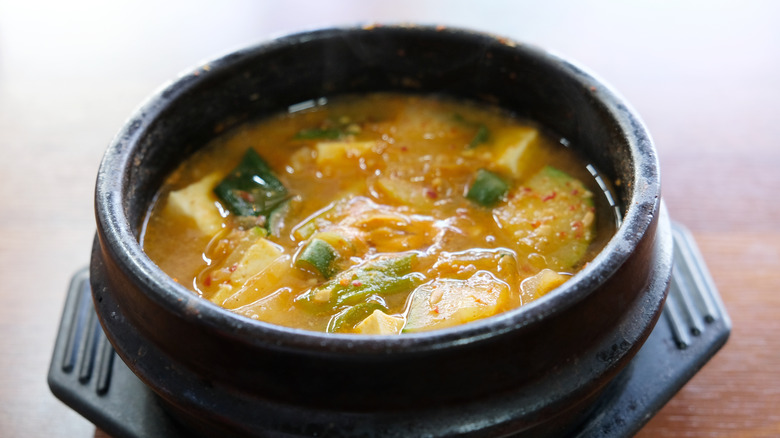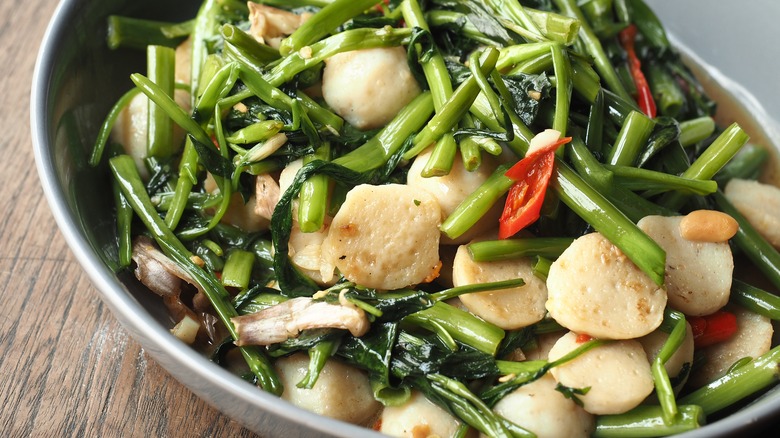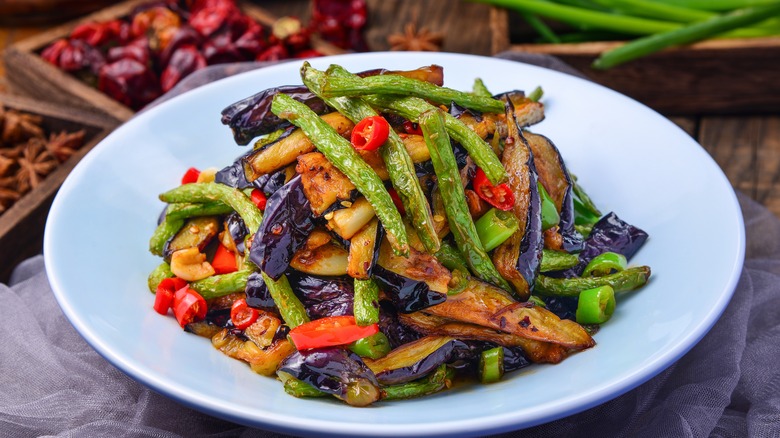Taiwanese Soy Paste Is A Game-Changing Oyster Sauce Alternative
Taiwanese soy paste is used in much of the country's salty-sweet food and, unlike fermented soybean paste, this version has more viscosity – like a glaze. In fact, speaking to Bon Appetit, Lisa Cheng Smith, founder of Yun Hai Taiwanese Pantry, likened the ingredient to balsamic reduction.
However, even though that reference to a reduction offers a visual consistency image, the flavor is not limited to a dollop on a plate. Melody Chen, the marketing director of Kimlan Foods — the brand considered to be the originator of a mass-produced Taiwanese soy paste — believes that the flavor adds depth to dishes. It can marry the sweet and savory notes in a recipe, and offer a glistening sheen when coating fish balls or adding rich color to a sauce.
For cooks who enjoy the sweet and salty flavor of an oyster sauce but prefer to eliminate the fish component, the Taiwanese soy paste can be a good alternative. While similar in color, the soy paste sauce will have a slightly different consistency, with oyster sauce tending to be more liquid. But, both sauces can enhance flavor and appearance in dishes and capture the contrasting sugary, saline flavor.
Care and craft go into making the unique flavor
Although the sticky, glaze-like brown sauce might appear similar to other options on the shelf, Taiwanese soy paste has been touted as the world's most convenient condiment. According to Lisa Cheng Smith, founder of Yun Hai, Taiwanese Pantry, the superlative description stems from the condensed flavor. But, it is the care and craft going into the creation of the product that is the foundation of flavor.
Smith did a deep dive into Taiwanese soy, its history, and the impact of the country's terroir on flavor. While the Taiwanese soy paste is thicker than soy sauce, the flavor would not be as robust without the underlying sauce. From the particular brewing process to the type of soybean used, each component enhances the flavor. Although some commercial brands might be able to scale the creation process, Smith encourages people to better appreciate the artisan aspect of Taiwanese soy. Even if people are unfamiliar with the soy conversation, the concept is applicable in other food discussions, like olive oil or cheese, which provides an underlying understanding.
Here's how to use Taiwanese soy paste
As many cooks appreciate, building umami in a dish can lead to a blissful dining experience. With Taiwanese soy paste, however, it is more than a non-fish alternative to oyster sauce. It can be used in both sweet and savory recipes.
While Taiwanese restaurants might use the pungent brown condiment in a variety of dishes, the home cook could easily appreciate its flavor benefits in a stir fry. The combination of cooking liquids with the thicker Taiwanese soy paste creates a supple sauce that coats all the ingredients. Allowing all the flavors to meld together, the composed bite hits every flavor note.
Vegetable dishes are another popular choice. From boosting bland broccoli to creating an enticing sheen on green beans this handle little paste will enhance the blandest of veggies — you may even get your children to eat them! Given the syrupy texture, however, a little added liquid with the paste can loosen the consistency for a more even coating.
In a sweet application, the salty flavor can highlight sweetness or contrast other spices, similar to how some bakers use miso and soy in their dessert recipes. Although baking ratios would need to be considered, the umami boost could keep the dessert from becoming too sweet.
Although Taiwanese soy paste might not be as common on the American dining table as it is in its homeland, cooks may want to explore the flavor possibilities that the condiment offers. It could become their must-have secret ingredient.


